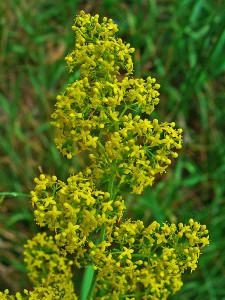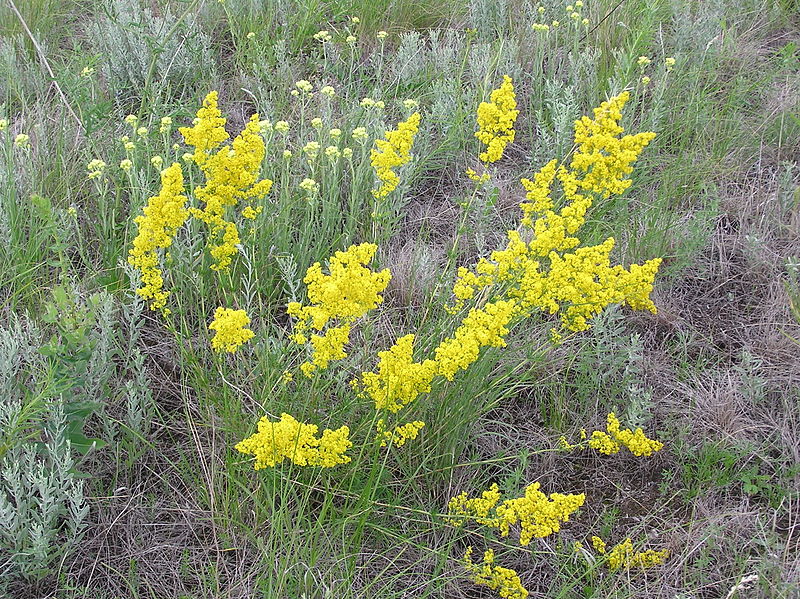 Lady’s Bedstraw (Galium verum), also called Yellow Bedstraw, is a herbaceous perennial that is hardy in zones 4 – 8. The plants are native to all of Europe, North Africa and temperate Asia. They spread to North America, New Zealand and Tasmania thanks to European colonists who brought the plants with them. Because Lady’s Bedstraw is invasive, it is considered a weed where it has naturalized.
Lady’s Bedstraw (Galium verum), also called Yellow Bedstraw, is a herbaceous perennial that is hardy in zones 4 – 8. The plants are native to all of Europe, North Africa and temperate Asia. They spread to North America, New Zealand and Tasmania thanks to European colonists who brought the plants with them. Because Lady’s Bedstraw is invasive, it is considered a weed where it has naturalized.
Lady’s Bedstraw has had many uses over the centuries. It was used medicinally to treat skin ailments and as an astringent and a diuretic. Foot problems were treated by soaking them in a bath of lady’s bedstraw and water. It was also believed to be a cure for epilepsy. There is no medical evidence for any of these treatments.
In medieval times, the dried plants were stuffed into mattresses as a flea repellent. The leaves contain the chemical, coumarin, which does repel fleas and is said to smell like vanilla or new mown hay. A legend says that Mary used the plant in the manger where she laid the infant Jesus, which is how it got its name.
Lady’s bedstraw has been used in the production of cheese. The flowers contain an enzyme that curdles milk. It is most famously used to produce English Cheshire cheese. The flowers were also used to color both butter and cheese yellow.
Nowadays lady’s bedstraw is used most often as a dyeing herb. The yellow flowers produce a yellow color while the root yields reds. Use a mordant of alum for a coral red or a mordant of chrome for a brick red.
Lady’s bedstraw is commonly found along roadsides and other waste areas. It thrives in full sun, but will tolerate a little shade. It prefers well-drained soil but will grow in almost any kind of soil except clay. Once established, it will tolerate dry soil.
The plants grow 12 to 24 inches high and 24 to 36 inches around. They spread both by underground runners and by rooting any stem that touches the ground. The flowers are yellow and grow in panicles. Bloom time is July through September.
If you choose to grow Lady’s bedstraw in your garden, you can take a few precautions to prevent it from taking over. You can plant it in a pot and sink the pot into the ground. This will prevent the underground stolons from spreading. You can also surround your plant with a barrier similar to the barriers used to confine bamboo. Use a peony support to keep the stems off the ground so that they cannot root and spread.
Lady’s bedstraw is difficult to grow from seed unless you can obtain fresh seed. Once the seed has dried, it germinates poorly. Sow the seed in the fall or spring directly in your garden. Barely cover it. Keep the soil moist and germination should occur in 2 to 3 weeks. Thin the seedlings to 6 inches apart.

